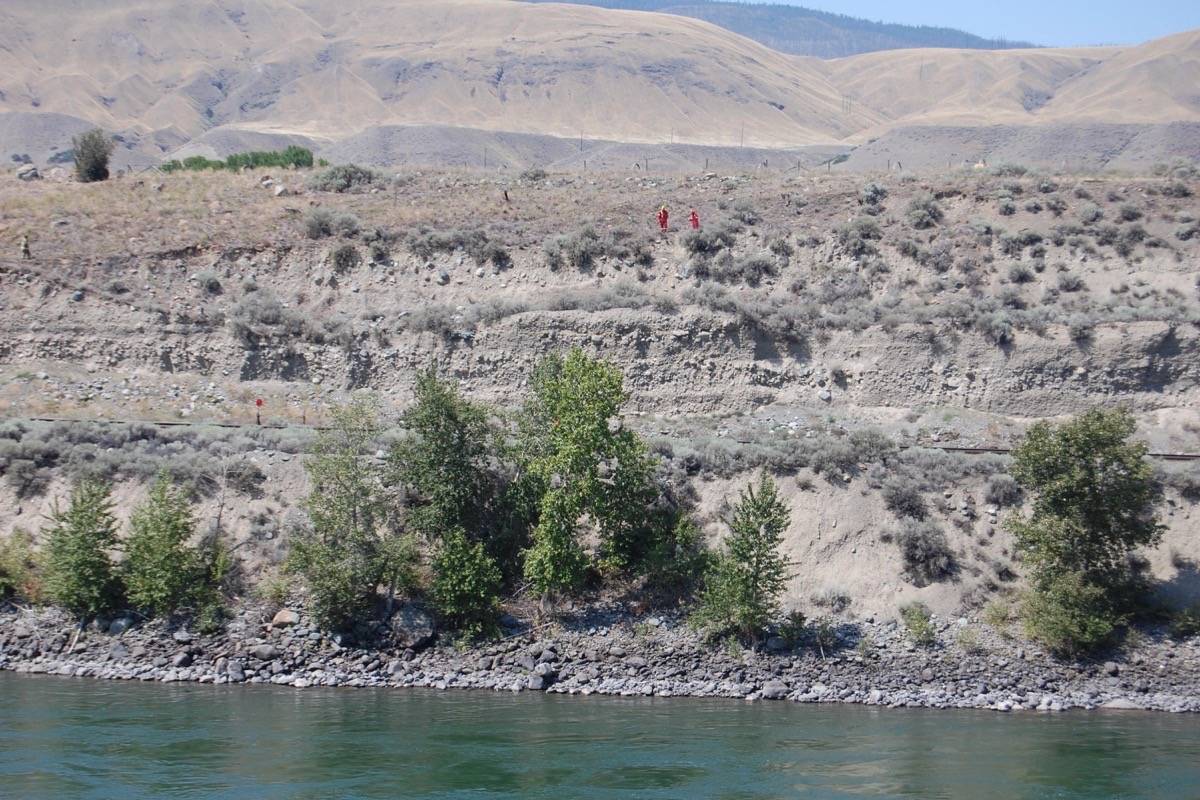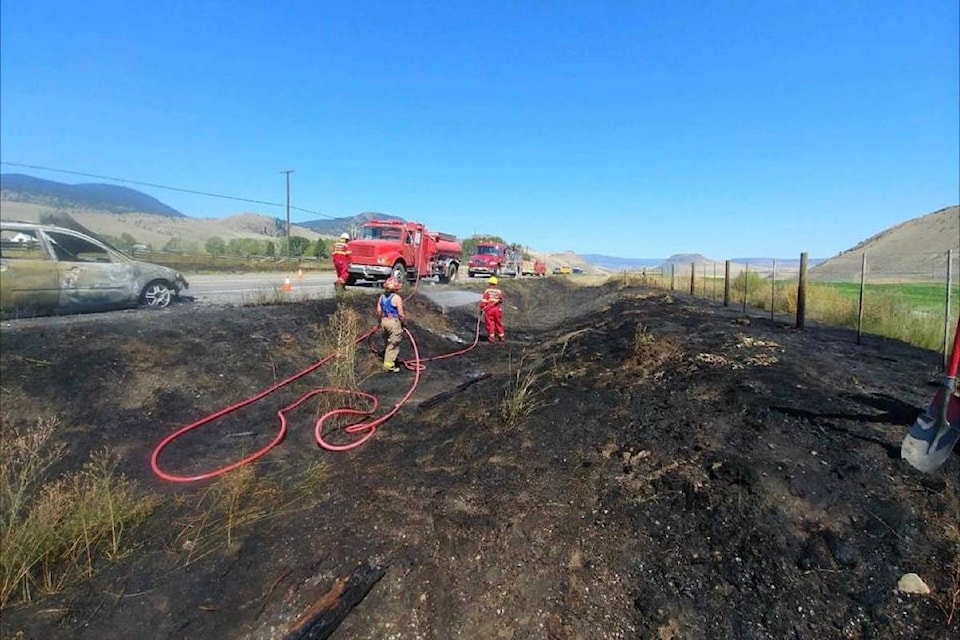Two vehicle fires in 11 days along the same stretch of Highway 1 has Ashcroft fire chief Josh White asking motorists to make sure their vehicles are well-maintained and pay attention to gauges, especially during hot weather.
On July 29 Ashcroft Fire Rescue was called to a vehicle fire on Highway 1 two kilometres south of Cornwall Road, and on Aug. 8 they were called to another vehicle fire that took place one kilometre north. Both incidents sparked extensive fires along the side of the highway. In between these events, Ashcroft firefighters actioned a small fire along the CN mainline just north of the School District No. 74 board office on Hollis Road.
White says that both vehicles that caught fire were travelling north on days when the temperature was more than 30 C. “And they had just come up Oregon Jack Hill, which is a fairly large hill,” notes White, who adds that he is trying to find commonalities to explain why both vehicles caught fire in much the same location.
In the July 29 fire, the driver noted that he had heard a loud bang under the engine compartment before smoke started coming out. He and his family were able to escape the car without injury, but the vehicle was completely destroyed.
White says that reports indicate the fire in the second vehicle also started under the engine compartment. There were no injuries, but that vehicle was also destroyed.
Firefighters actioned a 600-foot long fire along the east side of Highway 1 that was caused by the first incident.
“The fire didn’t jump the highway, and was about 30 feet wide at the widest point,” says White. The second incident sparked 300-foot long fires on both sides of the highway.
Even though they took place within the Village of Ashcroft boundaries, BC Wildfire Service (BCWS) was contacted in both instances. “They attended the first one, because they happened to be fighting a fire in Walhachin that day, so they sent a crew. They were really happy with the suppression job we’d done.”
A BCWS manager was in the vicinity when the second incident occurred, and White says he came to check on the status of the fire, then stood the BCWS crews down as the fire was under control.
“I came very close, on the second one, to calling the Cache Creek Volunteer Fire Department, as we were initially low on numbers; we only had four crew members to start. But two more firefighters arrived, and we had a helping hand from a member of the public who was a Good Samaritan.”
Firefighters were able to contain the roadside fires before they spread into dry sagebrush and grass further away from the highway. White says the fact that there was almost no wind on both days was a huge boon, and a complete contrast to the extreme wind that fanned the spread of the Elephant Hill wildfire in July 2017.
“The lack of wind was a huge factor. It really helps our firefighting efforts, for obvious reasons. If it had been windy, or even if the wind was coming from the north, we’d have been out of the nice grass buffer beside the highway and the fire could have taken off into the sagebrush. Having no wind is a key factor in keeping these things from going anywhere.”
White says that his crew did a fantastic job on the fires. “They worked extremely hard, and I’m really proud of how fast they knocked the fires down. We don’t need another 2017 on our hands. The way they got the job done was fantastic.”
He also praises the fast action of BC Hydro, and the RCMP for closing down the highway during the Aug. 8 incident.
“That allowed us to do our job safely, because we were working across the highway with lines on both sides. It was nice having them there [stopping traffic], because people get more frustrated when it’s the fire department doing it, so it’s better when police are there.”
White also thanks motorists for their patience. “We tried to get the highway open as fast as we could. We understand that people have places to go, and don’t want to sit in a hot car.”
White says that motorists should have their vehicles maintained regularly.
“During a maintenance check, a mechanic might catch something, like a driving belt that’s coming loose. They can get super hot when they’re loose. And pay attention to your gauges. How often does a person check their temperature gauge when they’re cruising along?”
Another precaution that White suggests is to have a small fire extinguisher in your car. “If it’s a full-blown engine fire then you might not be able to do anything about it, but a fire extinguisher is a good thing to have for the initial stages. If you can get to a fire while it’s small and nip it in the bud you might be able to put it out yourself.”
The department’s thermal imaging cameras were used after both vehicle fires, to ensure there were no hotspots, and White says they’re excellent tools. The department currently has two, and will be looking to acquire a third so that both fire engines have one on board. Currently the cameras are kept on the Rescue 1 truck and on Engine 3.
The cameras were also used on the CN mainline fire, which occurred on the afternoon of Aug. 5. A witness says that the fire was caused by a westbound train, and when firefighters arrived it was being actioned by two CN workmen with shovels. The site was not accessible by vehicle, but firefighters were able to run 600 feet of hose to the area.
“Because of the steep embankment there wasn’t much we could do,” says White. “We did a bit of a firebreak above the site, and lowered the hose down 60 feet to the CN workmen. They were grateful to be able to use that instead of a shovel. We looked at it from above with the thermal imaging camera and were able to see that it was extinguished.”
White adds that lack of wind was also a factor in stopping the spread of the CN line fire. “Everything is really dry out there. We’re very quick to access grass fires within the Village boundaries.
“Any grass fire from now on will trigger memories of 2017, and it’s going to be that way for anyone who went through 2017. Every time we see or smell a grass fire it will take us back, whether the fire is big or small.”
editorial@accjournal.ca
Like us on Facebook and follow us on Twitter

